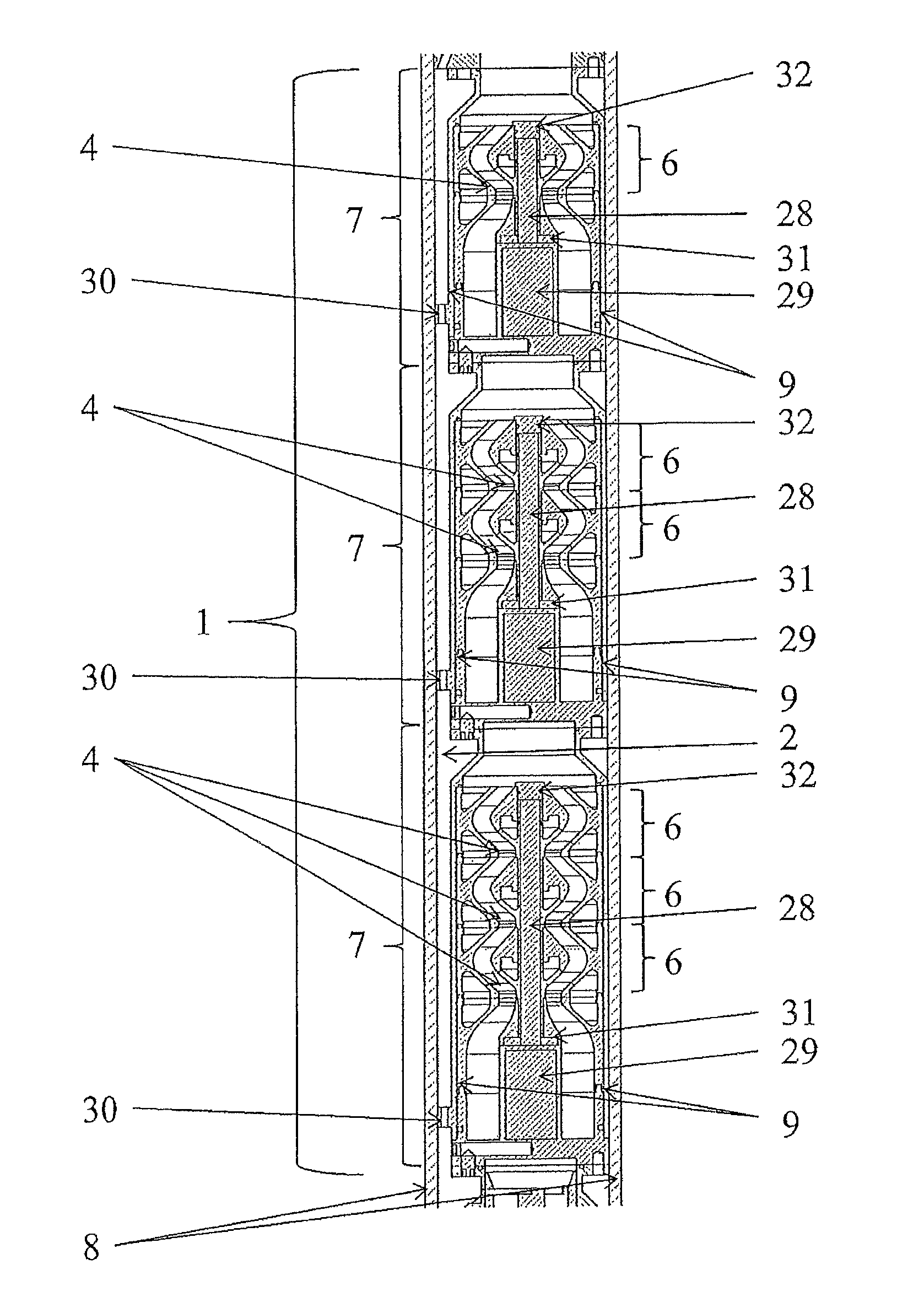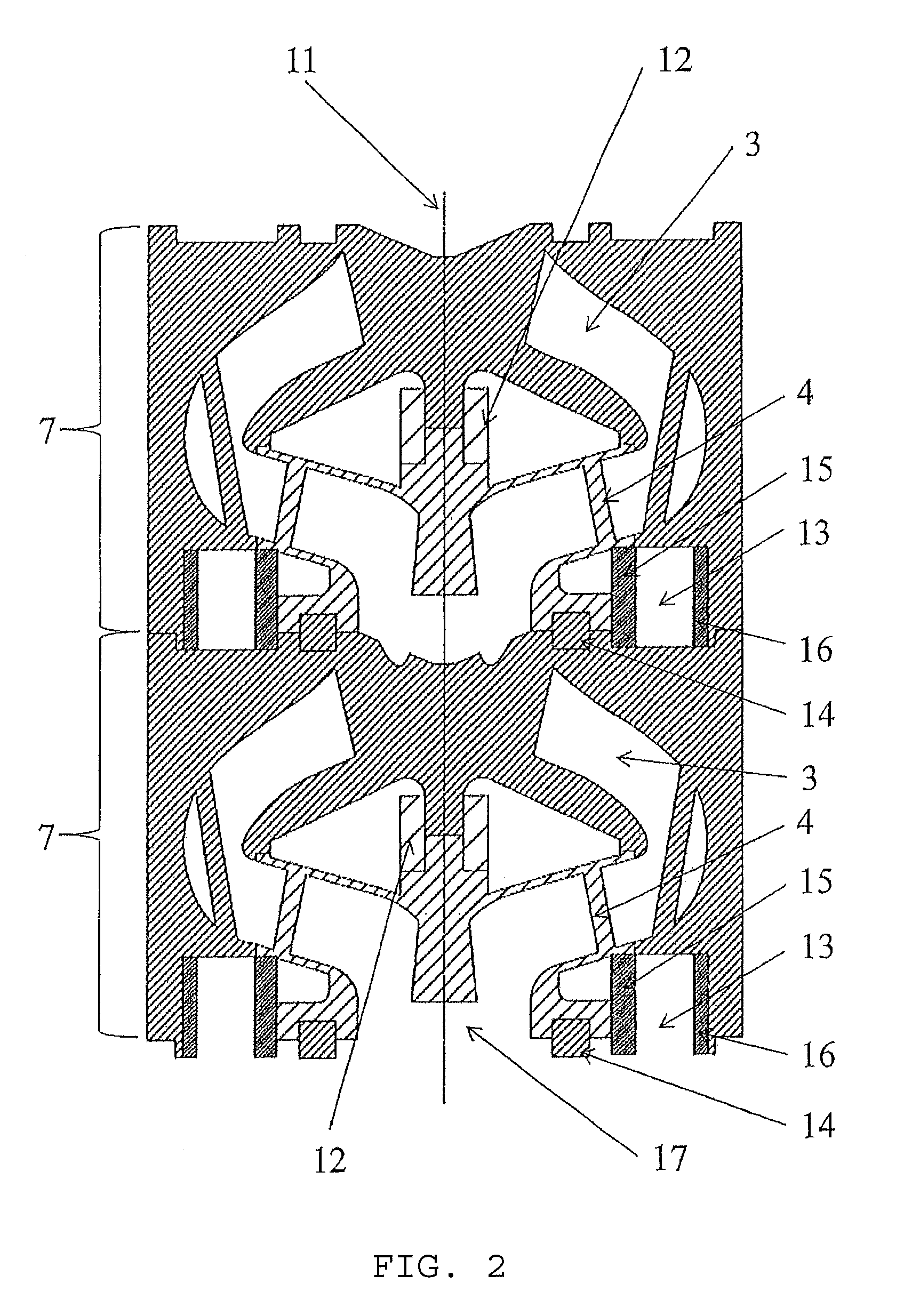Submersible electrical well pump having nonconcentric housings
a technology of submersible electrical well pumps and housings, which is applied in the field of pumps, can solve the problems of limited ability of each individual pump stage to deliver pressure increase, long existing construction, and short service life of the whole pump, so as to reduce the wear of any sand production and facilitate the service of the pump.
- Summary
- Abstract
- Description
- Claims
- Application Information
AI Technical Summary
Benefits of technology
Problems solved by technology
Method used
Image
Examples
Embodiment Construction
[0047]FIG. 1 illustrates a principle drawing of a pump section 1 where the pump steps 7 with inner casings 9 and a centre line 11 are located radially displaced, asymmetrical relative to a centre line 10 of the pump section 1. An annular volume 2 is thereby formed between the outer casing 8 in the pump section 1 and the inner casings 9 in the pump steps 7. The asymmetry is illustrated by the centre line 10 of the pump section 1 being displaced to the left of the common centre line 11 of the pump steps 7. FIG. 1 also shows that the four pump steps 7 each consist of a motor 5 and pump stage 6. It can also be seen in the figure that it is precisely in this embodiment illustrated here that each pump step 7 only has one pump stage 6. A pump stage 6 consists of an impeller 4 and a diffuser 3. The well fluid which has to be lifted to the surface will flow internally in each pump step 7.
[0048]FIG. 2 illustrates an embodiment of two pump steps 7, both of which in this embodiment contain a pu...
PUM
 Login to View More
Login to View More Abstract
Description
Claims
Application Information
 Login to View More
Login to View More - R&D
- Intellectual Property
- Life Sciences
- Materials
- Tech Scout
- Unparalleled Data Quality
- Higher Quality Content
- 60% Fewer Hallucinations
Browse by: Latest US Patents, China's latest patents, Technical Efficacy Thesaurus, Application Domain, Technology Topic, Popular Technical Reports.
© 2025 PatSnap. All rights reserved.Legal|Privacy policy|Modern Slavery Act Transparency Statement|Sitemap|About US| Contact US: help@patsnap.com



